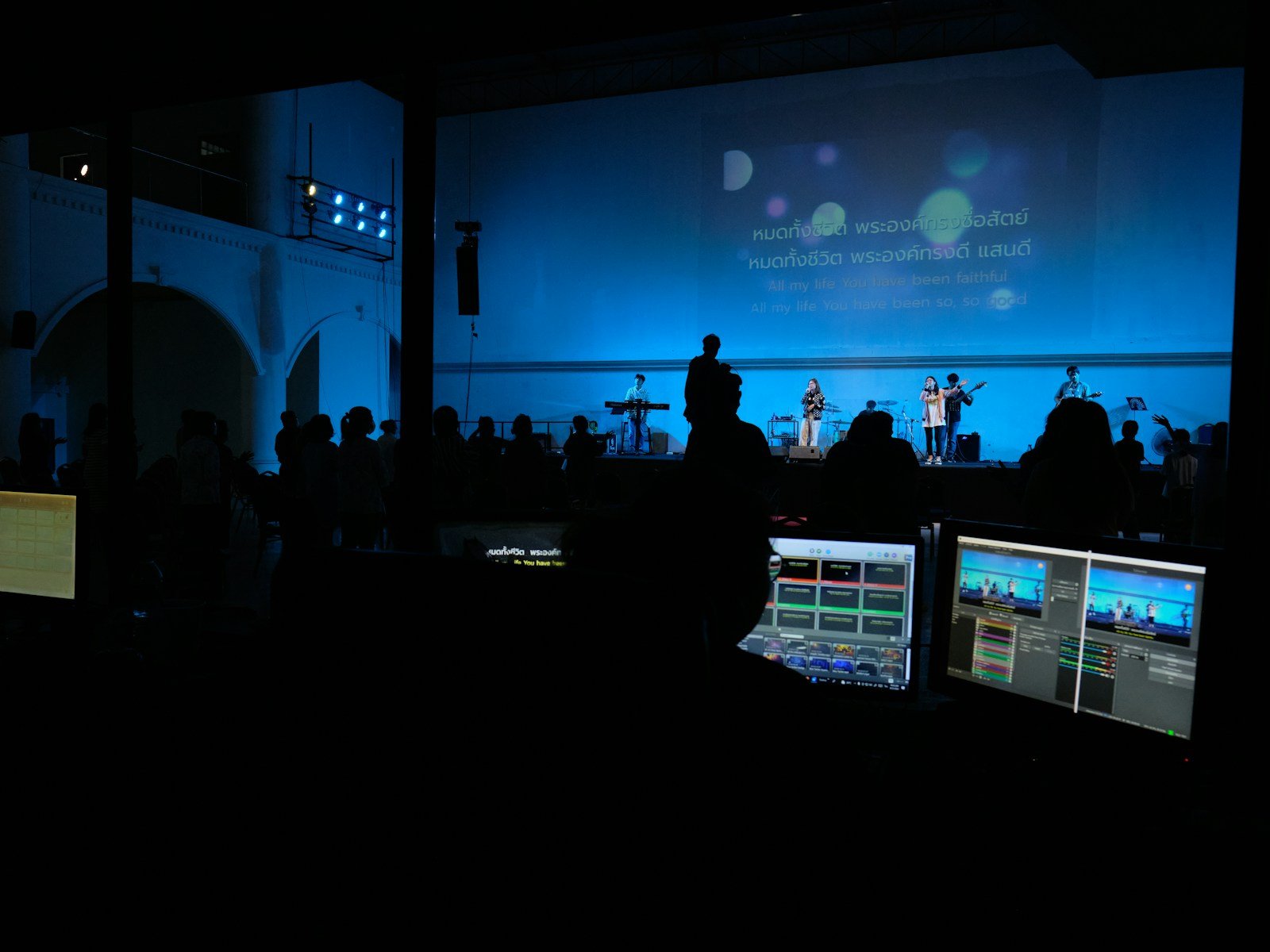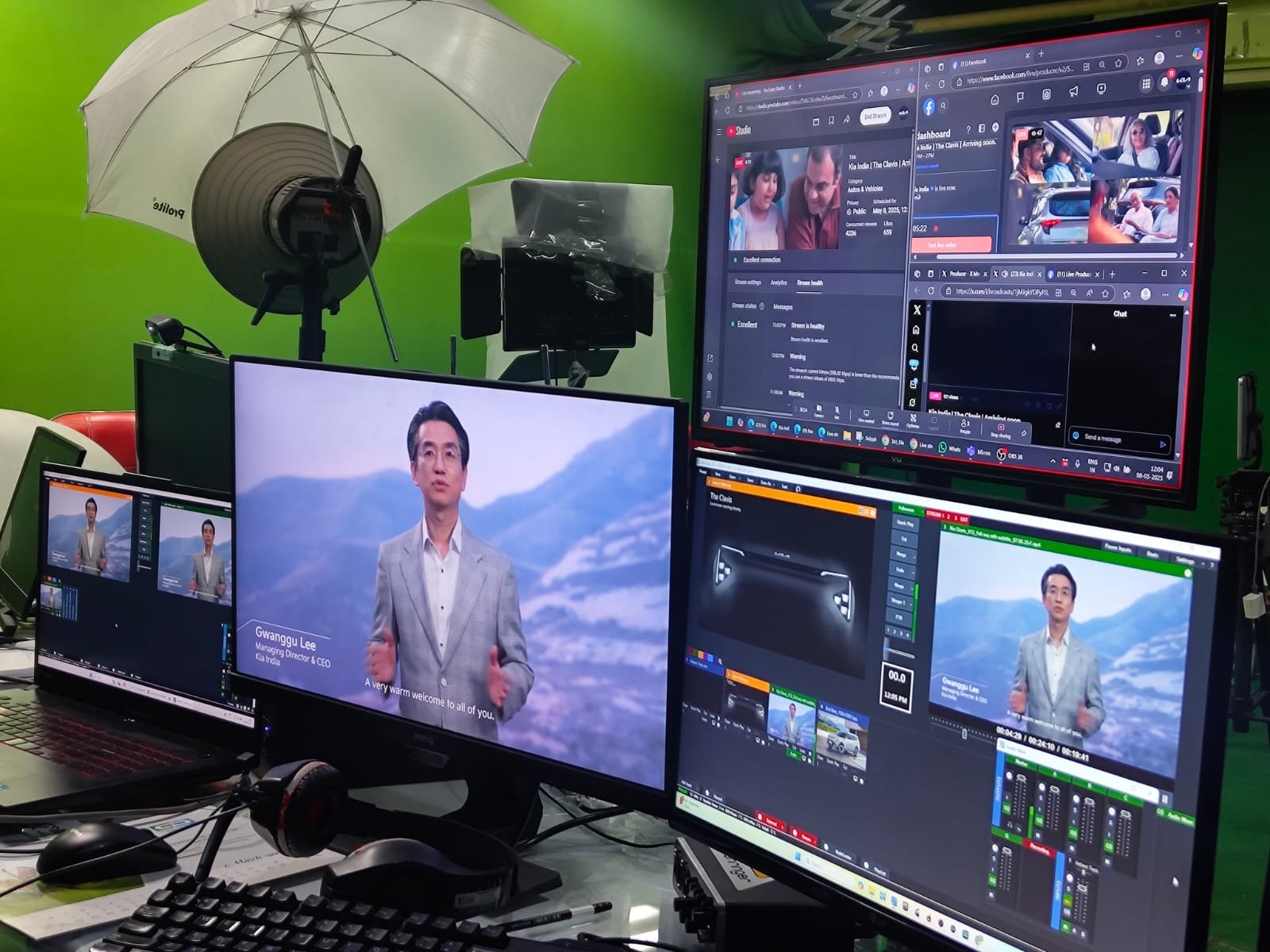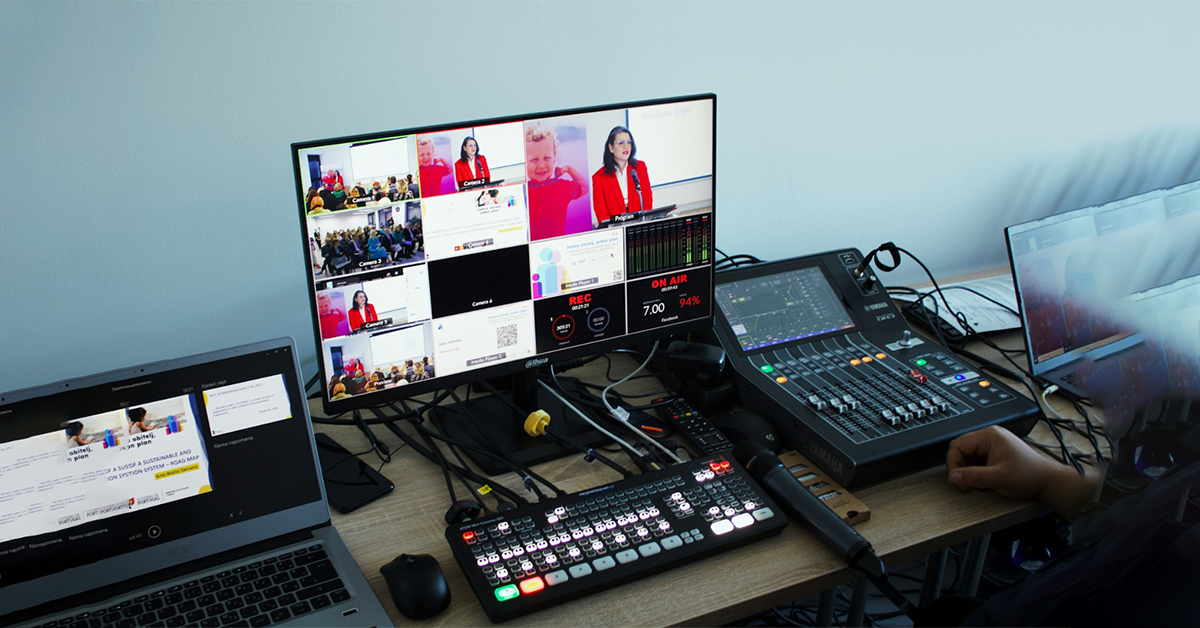Imagine a world where movies can be created without the need for physical sets or locations. A world where filmmakers can bring their wildest ideas to life through a combination of virtual environments and cutting-edge technology. Welcome to the rise of virtual production studios, where the future of filmmaking is being shaped. In these studios, directors, producers, and visual effects artists collaborate to create immersive and realistic worlds, harnessing the power of virtual reality and real-time rendering. This revolutionary approach is not only revolutionizing the film industry but also opening up endless possibilities for storytelling and creativity.
The Evolution of Film Production
The traditional processes of film production
For decades, the process of producing a film was a complex and arduous endeavor. It involved numerous stages, from script development and pre-production to shooting on location or in studios, followed by post-production and distribution. The traditional approach to film production relied heavily on physical sets, practical effects, and extensive post-production work. Filmmakers faced limitations in terms of budget, time, and resources, often compromising their creative vision.
Challenges and limitations in traditional production
The traditional methods of film production presented several challenges and limitations. Firstly, physical sets and practical effects required significant financial investments, making it difficult for smaller productions to compete with big-budget films. Moreover, the set construction and dismantling process was time-consuming, resulting in delays and added expenses. Additionally, the reliance on practical effects made it challenging to achieve certain visual elements, pushing filmmakers to compromise on their creative ideas.
The advent of digital technology in film production
The introduction of digital technology revolutionized the film industry. With the rapid advancement of digital cameras and computer-generated imagery (CGI), filmmakers began to explore new possibilities in storytelling and visual effects. Digital technology allowed for greater flexibility, efficiency, and cost-effectiveness in film production. Filmmakers could now create virtual environments and manipulate visuals in post-production, reducing the need for physical sets and practical effects.
Understanding Virtual Production Studios
Definition and Concept of Virtual Production Studios
Virtual Production Studios are innovative spaces that integrate cutting-edge technology, such as virtual reality (VR), augmented reality (AR), and real-time rendering, to streamline the film production process. These studios provide a collaborative environment where filmmakers can visualize and create entire sets and worlds digitally. Virtual Production Studios combine live-action footage with computer-generated imagery, enabling real-time interaction and visualization of complex scenes.
The operational dynamics of Virtual Production Studios
Virtual Production Studios operate as hubs for the convergence of various disciplines, including filmmaking, visual effects, animation, and software development. These studios employ a multidisciplinary team of professionals, such as directors, cinematographers, VFX artists, and programmers, who work together to bring a film’s vision to life. The key concept behind these studios is the integration of virtual and physical elements seamlessly, creating a more immersive and dynamic production process.
Components and equipment in Virtual Production Studios
Virtual Production Studios rely on a combination of hardware and software to facilitate the production process. The primary components include high-resolution LED screens, motion capture systems, virtual cameras, and real-time rendering engines. LED screens serve as a backdrop for virtual environments, enabling real-time visualization during the filming process. Motion capture systems capture the movement of actors and translate it into digital characters or elements. Virtual cameras emulate the movements of physical cameras but provide live feedback of the virtual environment. Finally, real-time rendering engines generate realistic visuals in real-time, ensuring seamless integration of live-action and digital elements.
Benefits of Virtual Production Studios
Efficiency in production
One of the significant advantages of Virtual Production Studios is the improved efficiency in the film production process. By creating virtual sets and environments, filmmakers can eliminate the need for extensive location scouting, set construction, and travel expenses. The ability to visualize scenes in real-time allows for quicker decision-making and adjustments, reducing the overall production timeline. Additionally, virtual production enables simultaneous shooting and post-production, saving valuable time and resources.
Increased creative possibilities
Virtual Production Studios offer filmmakers limitless creative possibilities. The ability to create fully immersive virtual environments opens up new storytelling techniques and allows for the realization of imaginative concepts that were previously deemed impossible. Filmmakers can seamlessly blend live-action footage with digital elements, creating visually stunning scenes that push the boundaries of traditional filmmaking. This expanded creative freedom empowers filmmakers to bring their visions to life in ways that were previously unimaginable.
Cost-effectiveness
Virtual Production Studios present a cost-effective alternative to traditional film production methods. By reducing the reliance on physical sets, practical effects, and extensive post-production work, filmmakers can significantly reduce their budgetary constraints. The use of virtual environments and digital effects eliminates the need for costly location shoots and expensive construction or destruction of physical sets. Additionally, the real-time rendering capabilities of virtual production technology allow for on-the-fly adjustments, minimizing costly reshoots and post-production modifications.
Reduced environmental footprint
In an industry notorious for its environmental impact, Virtual Production Studios offer a greener approach to filmmaking. By minimizing the reliance on physical sets and reducing the need for travel and transportation, virtual production significantly decreases carbon emissions. Moreover, the use of digital elements reduces waste generated from set construction and traditional post-production practices. This environmentally conscious approach aligns with the growing sustainability efforts in the film industry.
Impact of Virtual Production Studios on Film Creation
Narrative storytelling possibilities
Virtual Production Studios have opened up new avenues for narrative storytelling. The ability to create immersive virtual environments allows filmmakers to transport audiences to fantastical worlds, historical settings, or even futuristic landscapes. This enhanced storytelling toolbox enables filmmakers to engage viewers on a deeper level, evoking emotional responses and creating unforgettable experiences. With virtual production, the only limit to the narrative possibilities is the filmmaker’s imagination.
Improved visual effects and CGI
Virtual Production Studios have revolutionized visual effects and CGI capabilities in filmmaking. By integrating virtual environments and real-time rendering, filmmakers can seamlessly blend live-action footage with digital elements. This integration results in visually stunning scenes that would have been difficult or costly to achieve using traditional methods. From realistic computer-generated characters to breathtaking environments, virtual production enhances the visual impact of films and raises the bar for cinematic experiences.
New approaches to cinematography
Virtual Production Studios have brought about new approaches to cinematography. The integration of virtual cameras with real-time visualization allows cinematographers to experiment with camera movements and angles in a virtual environment before filming live-action footage. This pre-visualization process enables filmmakers to make informed decisions about camera placement, lighting, and framing, maximizing the visual impact of their shots. Virtual production also offers the flexibility to alter camera perspectives and settings during post-production, enhancing storytelling elements through enhanced visual aesthetics.
Animation and virtual characters
Virtual Production Studios have revolutionized the creation of animation and virtual characters. By combining motion capture technology with real-time rendering, filmmakers can bring digital characters to life with unprecedented realism. Whether it’s creating lifelike creatures, humanoid robots, or fantastical beings, virtual production offers filmmakers the tools to generate compelling animated characters seamlessly integrated into live-action footage. This integration opens up a world of possibilities for storytelling and characterization, pushing the boundaries of what can be achieved in film production.
Case Studies of Virtual Production in Action
The Mandalorian and the use of the Volume
The Mandalorian, a popular Star Wars series produced by Lucasfilm, has become a prominent example of virtual production’s impact. The series utilizes a groundbreaking technology called “the Volume,” which combines LED screens, motion capture, and real-time rendering for an immersive production experience. The Volume creates entire virtual environments that serve as backdrops for the show’s scenes. This innovative approach allows the actors to interact with digital landscapes in real-time, resulting in visually stunning and seamless integration of live-action footage with computer-generated elements.
Avatar and the pioneering of virtual production
James Cameron’s Avatar, released in 2009, is widely recognized for its pioneering use of virtual production techniques. The film employed a combination of motion capture, real-time rendering, and virtual camera systems to create the lush and immersive world of Pandora. The integration of live-action footage with computer-generated environments and characters set a new benchmark for visual effects in filmmaking. Avatar’s success demonstrated the potential of virtual production in creating visually stunning and immersive films.
The Lion King Animated Film
The 2019 live-action adaptation of Disney’s The Lion King showcased the power of virtual production in the realm of animation. Using advanced virtual production techniques, the film brought photorealistic computer-generated animals to life. The filmmakers used motion capture to capture the movements and expressions of real animals, which were then translated into digital characters. The integration of virtual production technology allowed for a visually stunning adaptation that retained the essence of the original animated film while pushing the boundaries of realism.
Game of Thrones and augmented reality
The mega-popular television series Game of Thrones utilized augmented reality (AR) in its production process. AR overlays virtual elements onto real-world footage, providing filmmakers with the ability to enhance practical sets and landscapes digitally. Game of Thrones used AR to create expansive and visually striking environments, seamlessly blending the physical and virtual worlds. The integration of augmented reality in the production of Game of Thrones showcased the potential of virtual production in the realm of television.
Virtual Production Studios and Television
Change in television production processes
Virtual Production Studios have brought about significant changes in television production processes. The integration of virtual environments and real-time rendering technology allows for the creation of visually stunning and immersive worlds, even with limited budgets. Television shows can now achieve the same level of visual grandeur as big-budget films, enticing viewers with captivating visuals. The shift towards virtual production in television has democratized the production process, allowing for more ambitious storytelling and imaginative visuals.
Live Virtual Events and Broadcasts
Virtual Production Studios have also facilitated the rise of live virtual events and broadcasts. With the ability to create virtual environments and combine live-action footage with digital elements in real-time, events such as award shows, concerts, and conferences can be held virtually. This opens up new opportunities for remote participation, reaching a global audience and reducing the need for physical venues. Virtual production technology has enabled the continuation of live events during challenging times, reshaping the landscape of entertainment.
Interactive Television and Virtual Production
Virtual Production Studios have paved the way for interactive television experiences. The integration of virtual environments and real-time rendering technology enables the creation of interactive narratives, where viewers can influence the outcome of the story. This technology allows for personalized viewing experiences and immersive storytelling, blurring the lines between traditional television and interactive gaming. The advent of virtual production has transformed television into an interactive medium, engaging viewers in unprecedented ways.
The Role of Software in Virtual Production Studios
Utilizing game engines like Unreal Engine
Virtual Production Studios heavily rely on software, with game engines like Unreal Engine playing a crucial role. Game engines provide the foundation for real-time rendering and interactivity within virtual environments. Unreal Engine, for instance, offers filmmakers a powerful toolset for creating virtual sets, designing characters, and incorporating dynamic lighting and effects. These game engines streamline the production process, allowing for real-time feedback and adjustments, ultimately enhancing the efficiency and visual quality of virtual production.
CGI software and its role
CGI software is an integral part of Virtual Production Studios. These software tools enable artists to create and manipulate computer-generated elements, such as characters, creatures, and environments. With advanced CGI software, filmmakers can achieve photorealistic visuals, seamlessly integrated with live-action footage. These tools empower artists to bring their creative visions to life and enhance the visual impact of their films through intricate digital effects.
Animation and rendering software
Animation and rendering software are fundamental to the creation of virtual worlds and characters in Virtual Production Studios. These software tools enable filmmakers to animate characters and objects, giving them life and realism. Additionally, rendering software generates the final visual output of the virtual environments, ensuring that the scenes are visually appealing and realistic. The use of animation and rendering software is critical in achieving the immersive and visually stunning results that virtual production offers.
Future of Virtual Production Studios
Progress in technology and its implications
The future of Virtual Production Studios looks promising, with continued progress in technology anticipated. As technology advances, real-time rendering capabilities and hardware requirements will improve, allowing for even more realistic and visually striking virtual environments. The integration of emerging technologies such as 5G and cloud computing will further enhance the collaborative and real-time aspects of virtual production. Innovations in AI and machine learning will enable more sophisticated character animations and autonomous virtual elements, reshaping the possibilities of storytelling.
The role of AI and machine learning
AI and machine learning are poised to play a significant role in the future of Virtual Production Studios. These technologies can revolutionize the creation process by automating certain tasks, such as character animation or environment generation. AI-powered algorithms can also analyze vast amounts of data and provide insights that enhance the creative decision-making process. As AI and machine learning continue to advance, Virtual Production Studios will benefit from increased efficiency, realism, and creative possibilities.
Emerging trends in virtual reality and augmented reality
Virtual Production Studios are likely to explore emerging trends in virtual reality (VR) and augmented reality (AR) in the coming years. VR technology offers a fully immersive experience, allowing filmmakers to transport viewers into virtual worlds. AR, on the other hand, overlays digital elements onto the real world, enhancing practical sets and environments. The combination of VR, AR, and virtual production can create captivating and interactive experiences that push the boundaries of filmmaking.
Challenges and Limitations of Virtual Production
Technical challenges in virtual production
While virtual production holds immense potential, it also presents technical challenges. The integration of hardware and software components requires expertise and technical knowledge. Maintaining real-time interaction and synchronization between live-action footage and virtual environments can be complex, requiring robust infrastructure and hardware capabilities. Additionally, the sheer amount of data generated during virtual production poses challenges in terms of storage and processing power.
Concerns over lack of human touch and authenticity
Some critics argue that virtual production may lack the human touch and authenticity associated with traditional filmmaking. Physical sets, practical effects, and the presence of actors on-location create a unique atmosphere that may be difficult to replicate in virtual environments. The absence of tangible elements and physical interactions may lead to a sense of detachment for both the performers and the audience. Balancing the benefits of virtual production with the authenticity and emotional connection of traditional filmmaking is an ongoing challenge.
The high initial investment in technology
One of the main barriers to entry for Virtual Production Studios is the high initial investment required. The advanced hardware and software components necessary for virtual production can be costly. Small-scale productions or independent filmmakers may face financial challenges in fully embracing virtual production. However, as the technology becomes more mainstream and accessible, the costs are expected to decrease, making it more feasible for a wider range of filmmakers to adopt virtual production techniques.
Conclusion: The Rapid Rise of Virtual Production Studios
Virtual Production Studios have experienced a rapid rise in recent years, transforming the film industry and redefining the boundaries of creativity. By leveraging digital technology, filmmakers can now visualize and create entire worlds in virtual environments, bringing their visions to life with unprecedented realism and efficiency. The benefits of virtual production, including increased creative possibilities, cost-effectiveness, and reduced environmental footprint, make it a game-changer in the film industry.
Looking ahead, the future of Virtual Production Studios appears promising, with continued advancements in technology and the integration of emerging trends such as AI, VR, and AR. While certain challenges and limitations exist, the potential of virtual production to reshape the future of filmmaking cannot be underestimated. The industry’s adaptability to embrace these technological advancements will be crucial in capitalizing on the benefits that Virtual Production Studios have to offer. With constant innovation and collaboration, the sky is the limit for the evolution of film production through virtual production.







